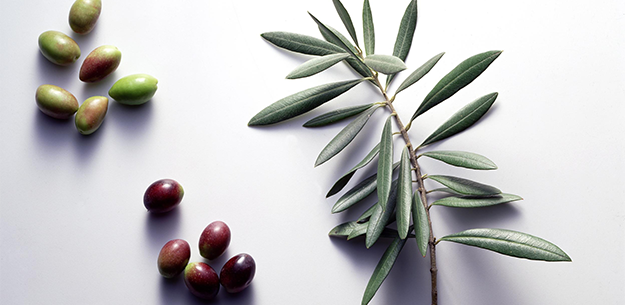.png.transform/rendition-xs/image_image%20(1).png)
The Secret to Spanish EVOO: Native Olive Varieties
The purpose of this article is to analyze a key aspect in the success of Spanish EVOO: the native olive varieties that are cultivated in this country. To do so, we turned to one of the most reliable sources, the extra virgin olive oil “taster” and expert international promoter of Spanish olive oil, Alfonso Fernández.

Talking about the excellent quality of extra virgin olive oil can't help but bring the conversation back to the origins of this project, where it all began: the olive tree. Spain has the largest expanse of olive trees in the world. Specifically, there are more than 282 million olive trees in Spain, primarily concentrated in the center and south of the country, as well as in lesser amounts in Catalonia, Navarre, Aragón, La Rioja, Castile-León and Galicia.
The purpose of this article is to analyze a key aspect in the success of Spanish EVOO: the native olive varieties that are cultivated in this country. To do so, we turned to one of the most reliable sources, the extra virgin olive oil “taster” and expert international promoter of Spanish olive oil, Alfonso Fernández. This professional has collaborated with ICEX Spain, Trade and Investment and its promotional branch Foods & Wines from Spain for years, leading seminars and tastings of Spanish EVOO in prestigious culinary schools in the United States and Switzerland, as well as in the official Spanish pavilions at international food fairs.
There are two important questions to be considered: what are the four main varieties of olives in Spain and what are their characteristics? Before answering both questions, Alfonso Fernández forewarns: “In Spain we have 268 different olive varieties, each with their own distinctive qualities. There are also blends and coupages of different varieties that are the sum of the best of each individual one. What I mean by this is that each oil has its own personality. A variety and even a brand is a seasoning, per se. Just as there are different types of chilies made from peppers, curries, or any other spice, each variety lends a different note depending on the dish, and we're only talking about using them raw. If on top of that we add their behavior when heated, even more differences emerge. What I am trying to say is that it's important to be simultaneously ambitious and generous with extra virgin olive oil when cooking. There isn't just one olive oil for everything. I promise you that there are combinations that will pleasantly surprise you.”
Picual: a strong personality
“Picual has a thousand names and an enormous cultivation area, covering thousands of hectares, that includes various provinces in Andalusia and even Castile-La Mancha. Therefore, its flavor varies depending on which area or place it's from (not its terroir, which here plays a lesser role than in wine). It is a hearty variety in general, with a lot of flavor and the green notes of tomatoes or the tomato plant, as well as those of green almonds, when they've been harvested early. On the palate, and depending on the production area, it tends to be astringent and bitter (the only basic flavor of extra virgin olive oil, its absence is referred to as ‘sweet’), and with a bite that increases after the initial few seconds. These are oils with a lot of personality, which maintain their flavor over time. They are magnificent for cooking at high temperatures.”
Arbequina: mild versatility
“Arbequina is like the pop music of olive oils. Its fruity (aromatic intensity in this small world of olive oil tasting) and sweet nature (the absence of bitterness) make it very agreeable in the markets, or with people, that aren't accustomed to using extra virgin. It has notes reminiscent of bananas, apples and ripe fruits, and a very mild palate, without noticeable bitterness (this also depends on the production area). And like pop music, it is a very easy and agreeable extra virgin. Unlike other varieties, it does not stand up well to high temperatures. It is originally from Catalonia, but its democratic tendency to please has caused it to flourish, not only throughout Spain, but also in all the world's new production zones, as both a single-variety, and as part of a blend.”
Hojiblanca: singular green notes
“Hojiblanca is a exceptional variety in terms of flavor. Both alone and in blends it has won a multitude of competitions in these recent, successful years. It can vary a lot depending on the production area, and milling it when green can lend it notes of leaves and freshly cut grass – always green nuances that are confirmed in one's mouth, with a sweetness and spice that is reminiscent of green peppercorn. It is truly agreeable on the palate."
Cornicabra: the palate-pleasing surprise
“Cornicabra originates in Castile-La Mancha, the second most important Autonomous Community in Spain after Andalusia. It is a very curious variety for the novice, with aromas of a very specific kind of apple, the Granny Smith. This expectation of fruitiness does not follow through on the palate, where it manifests as a robust variety with a marked bitterness and persistent bite. A powerful variety that, when treated well, yields extraordinary oils, like all the others. Like Picual, it stands up well to high cooking temperatures.”
Text: Rodrigo García Fernández /©ICEX
Translation: Adrienne Smith /©ICEX
Photos: Juan Manuel Sanz /©ICEX

